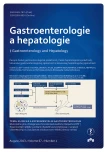Biopsy is inadequate for precise diagnosis of neoplasia in patients with Barrett's esophagus
Authors:
M. Stefanová 1; I. Tučková 2; J. Malušková 3; M. Kollár 3; J. Špičák 4; J. Martínek 4
Authors‘ workplace:
Interní oddělení, Nemocnice Na Františku, Praha
1; Oddělení patologie, ÚVN, Praha
2; Patologické oddělení, IKEM, Praha
3; Klinika hepatogastroenterologie, IKEM, Praha
4
Published in:
Gastroent Hepatol 2013; 67(4): 264-270
Category:
Clinical and Experimental Gastroenterology: Original Article
Overview
Endoscopic resection (ER) is a diagnostic and therapeutic method of treatment of early esophageal neoplasia. Diagnosis of neoplasia is usually based on forceps biopsy. However, it is not clear whether the diagnostic agreement between forceps biopsies and ER is sufficient.
Aim:
To compare diagnostic yield of targeted biopsies compared with ER in patients with early esophageal neoplasia, and to analyze histological diagnosis and the advancement of lesions based on the macroscopic type.
Method:
69 patients with 78 suspected lesions of the esophagus (eight women and 61 men, average age 63 years, range 34–85) undergoing both targeted biopsies with trimodal endoscopy, and ER.
Results:
Initial diagnoses of targeted biopsies were: 17× early adenocarcinoma (EAC), two squamous carcinoma (SCC), 36× high-grade dysplasia (HGD), and 23× low-grade dysplasia (LGD). Compared to prior forceps biopsies, histopathology from ER specimen was the same in 45 lesions (58%) and changed in 33 lesions (42%). In 21 samples (63%) diagnosis has been up-staged after ER. In 12 samples (37%) diagnosis has been down-staged. Macroscopic lesion type 0-IIa (slightly protruding lesion) and 0-IIb (flat lesion) were the most frequent in our study. From a total of 39 cancers (diagnosis based on ER), 20 (51%) were in lesion type 0-IIa.
Conclusion:
Targeted biopsies are not sufficient for an accurate diagnosis of esophageal cancer. ER should be preferred as a diagnostic method in patients with suspected esophageal neoplasia.
Key words:
Barrett’s esophagus – neoplasia – targeted biopsy – endoscopic resection
The authors declare they have no potential conflicts of interest concerning drugs, products, or services used in the study.
The Editorial Board declares that the manuscript met the ICMJE „uniform requirements“ for biomedical papers.
Submitted:
19. 7. 2013
Accepted:
9. 8. 2013
Sources
1. Spechler SJ, Sharma P, Souza RF et al. American Gastroenterological Association medical position statement on the management of Barrett’s esophagus. Gastroenterology 2011; 140(3): 1084–1091.
2. Ell C, May A, Gossner L et al. Endoscopic mucosal resection of early cancer and high--grade dysplasia in Barrett's esophagus. Gastroenterology 2000; 118(4): 670–677.
3. Bennett C, Vakil N, Bergman J et al. Consensus statements for management of Barrett’s dysplasia and early-stage esophageal adenocarcinoma, based on a Delphi process. Gastroenterology 2012; 143(2): 336–346.
4. Titi M, Overhiser A, Ulusarac O et al. Development of subsquamous high-grade dysplasia and adenocarcinoma after successful radiofrequency ablation of Barrett’s esophagus. Gastroenterology 2012; 143(3): 564–366.
5. Hull MJ, Mino-Kenudson M, Nishioka NS et al. Endoscopic mucosal resection: an improved diagnostic procedur for early gastroesophageal epithelial neoplasms. Am J Surg Pathol 2006; 30(1): 114–118.
6. Wani S, Mathur SC, Curvers WL et al. Greater interobserver agreement by endoscopic mucosal resection than biopsy samples in Barrett’s dysplasia. Clin Gastroenterol Hepatol 2010; 8(9): 783–788.
7. Endoscopic Classification Review Group. Update on the paris classification of superficial neoplastic lesions in the digestive tract. Endoscopy 2005; 37(6): 570–578.
8. Montgomery E, Bronner MP, Goldblum JR et al. Reproducibility of the diagnosis of dysplasia in Barrett esophagus: a reaffirmation. Hum Pathol 2001; 32(4): 368.
9. Phoa KN, Pouw RE, van Vilsteren FG et al. Remission of Barrett's esophagus with early neoplasia 5 years after radiofrequency ablation with endoscopic resection: A Netherlands Cohort Study. Gastroenterology 2013; 145(1): 96–104.
10. van Vilsteren FG, Bergman JJ. Endoscopic therapy using radiofrequency ablation for esophageal dysplasia and carcinoma in Barrett’s esophagus. Gastrointest Endosc Clin N Am 2010; 20(1): 55–74.
11. Reed MF, Tolis G Jr, Edil BH et al. Surgical treatment of esophageal high--grade dysplasia. Ann Thorac Surg 2005; 79(4): 1110–1115.
12. Sharma P, Bansal A. Toward better imaging of Barrett’s esophagus – see more, biopsy less! Gastrointest Endosc 2006; 64(2): 188–192.
13. Pech O, Gossner L, Manner H et al. Prospective evaluation of the macroscopic types and location of early Barrett’s neoplasia in 380 lesions. Endoscopy 2007; 39(7): 588–593.
14. Peters FP, Brakenhoff KP, Curvers WL et al. Histologic evaluation of resection specimens obtained at 293 endoscopic resections in Barrett’s esophagus. Gastrointest Endosc 2008; 67(4): 604–609.
Labels
Paediatric gastroenterology Gastroenterology and hepatology SurgeryArticle was published in
Gastroenterology and Hepatology

2013 Issue 4
- Metamizole vs. Tramadol in Postoperative Analgesia
- Metamizole at a Glance and in Practice – Effective Non-Opioid Analgesic for All Ages
- Possibilities of Using Metamizole in the Treatment of Acute Primary Headaches
- Current Insights into the Antispasmodic and Analgesic Effects of Metamizole on the Gastrointestinal Tract
- Spasmolytic Effect of Metamizole
Most read in this issue
- Esophageal manometry
- Pentasa Sachet 2 g
- Proton pump inhibitors: side effects and interaction
- Peroral endoscopic myotomy (POEM) for the treatment of a rare type III achalasia
